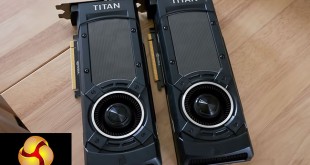
If you are considering a new Ultra HD 4K monitor then it is likely you will need a new system update to drive those 8,294,400 pixels. Right now the cost of 4k capable graphics cards is prohibitive for all but the wealthiest of gamers. When we reviewed the Titan X last month we noticed performance could still drop under 60 frames per second when dealing with the most demanding engines. We slot another card into our test bed – we answer the question ‘Are two Titan X's enough to drive 60fps+ at 4K?'
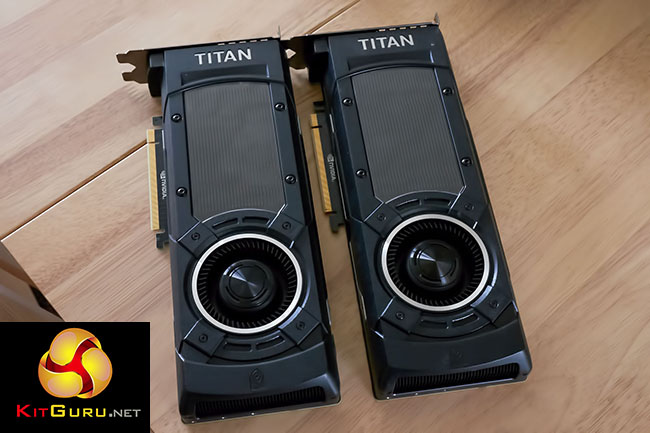
The Nvidia Titan X is based around the physically large GM200 die and is built on the 28nm process.
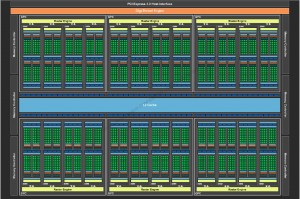
This is an extended 28nm die, 50 percent bigger than the one found on the GTX980. There are two more GPC clusters, enhancing the specifications to 3,072 cores and 192 texture units.
| GPU | GeForce GTX 750ti (Maxwell) | GeForce GTX 960 (Maxwell) | Geforce GTX 970 (Maxwell) | GeForce GTX 980 (Maxwell) | Geforce GTX Titan X |
| Streaming Multiprocessors | 5 | 8 | 13 | 16 | 24 |
| CUDA Cores | 640 | 1024 | 1664 | 2048 | 3072 |
| Base Clock | 1020 mhz | 1126 mhz | 1050 mhz | 1126 mhz | 1000 mhz |
| GPU Boost Clock | 1085 mhz | 1178 mhz | 1178 mhz | 1216 mhz | 1076mhz |
| Total Video memory | 2GB | 2GB | 4GB | 4GB | 12GB |
| Texture fill-rate | 40.8 Gigatexels/Sec | 72.1 Gigatexels/Sec | 109.2 Gigatexels/Sec | 144.1 Gigatexels/Sec | 192 Gigatexels/Sec |
| Memory Clock | 5400 mhz | 7010 mhz | 7000 mhz | 7000 mhz | 7000 mhz |
| Memory Bandwidth | 86.4 GB/sec | 112.16 GB/sec | 224 GB/s | 224 GB/sec | 336.5 GB/sec |
| Bus Width | 128bit | 128bit | 256bit | 256bit | 384bit |
| ROPs | 16 | 32 | 56 | 64 | 96 |
| Manufacturing Process | 28nm | 28nm | 28nm | 28nm | 28nm |
| TDP | 60 watts | 120 watts | 145 watts | 165 watts | 250 watts |
The Nvidia Titan X has 32 more ROPS than the GTX980, totaling 96. The memory interface has been set at a broad 384 bit … comprised of 6 x 64 bit pathways. This is more in line with the older generation of Nvidia hardware, like the GTX780 Ti – as the newer hardware has depended extensively on colour compression algorithms to improve overall efficiency.
Many readers are still under the impression that the Titan range of cards are not designed for gamers, but as I have explained multiple times, Nvidia have been marketing Titan hardware to the gaming enthusiast for years. Don’t take my word for it – the Titan Z for instance, according to Nvidia is a ‘gaming monster’. The Titan Black ‘gives you the added horsepower to drive your most graphics-intensive games’ – all on the Nvidia website here.
According to industry insiders, over 85% of all Titan sales are to the gaming enthusiast.
It is true that many professionals may have considered a Titan oriented graphics card, due to the double precision support. The standard Titan can handle DP calculations at 1/4 SP speed – which when compared directly to the 1/24 rate of the GTX780 Ti, is incredibly quick. The GTX 980 is rated at 1/32 SP and the Titan X is unfortunately no quicker. If you need a graphics card for double precision processing capabilities, then the Titan X is not for you – it is actually slower than the Kepler based Titan hardware from the previous generation.
Nvidia obviously want you to pay more for Double Precision performance, and they (not surprisingly) have a range of wallet sapping Quadro cards on offer, designed to deliver the goods. An example is the Quadro M6000 – built on the same GM200 die as the Titan X, but with much better DP performance. Just be prepared to pay out the ying-yang for the pleasure.
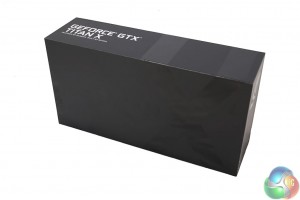
Our review samples came direct from Nvidia.
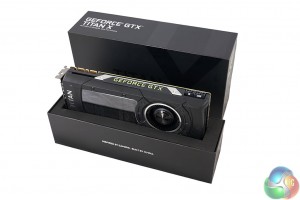
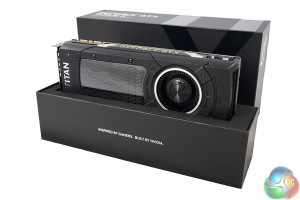
While I don't often focus on packaging, I have to admit that I do like how Nvidia send out their reference samples – The Titan X is presented in a beautifully effective black box with the card slotted into a base.
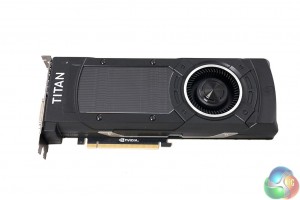
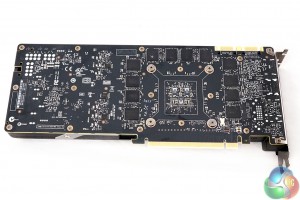
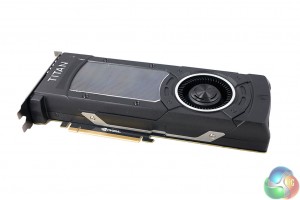
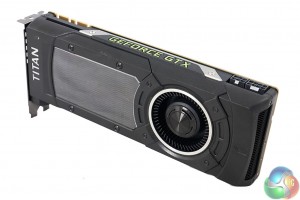
This is how the Nvidia Titan Black should have looked. Nvidia have built this card on a black PCB, with some minor silver accenting to highlight the fan and brand name. It is a beautifully effective looking card design, although I have always thought the Nvidia reference cards were leagues ahead of AMD, in regards to appearance anyway. Sadly no backplate on the card, which is a little disappointing on such a premium board.
It goes without saying, this is a two slot solution. Dimensions are 270mm by 110mm.
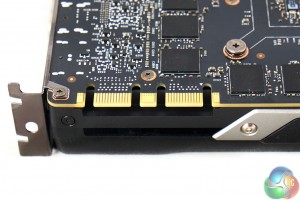
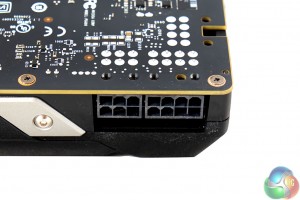
The Nvidia Titan X is SLi capable – in 2,3 and 4 way configurations. It takes power from a six pin and eight pin connector.
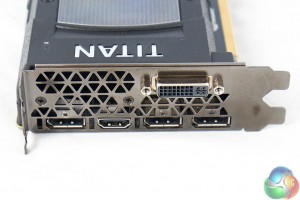
The card ships with a single DVI port, one HDMI 2.0 port (with HD audio and Blu-Ray 3D movie support), and three DisplayPorts. The move to predominately Displayport connectivity is inevitable and welcomed. If you wish, you can use all these ports at the same time for triple monitor gaming.
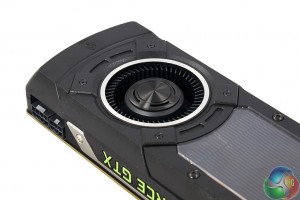
The reference Titan cards are always cooled by a single fan, as shown above. This fan spins and forces hot air out the rear of the case.
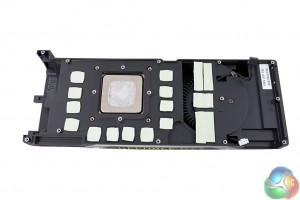
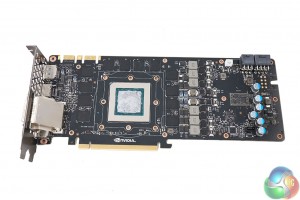
The reference cooler is not going to match the best custom coolers by Nvidia partners, but we have always found them to be reasonably quiet, and capable performers. More analysis of the cooling solution later in the review.
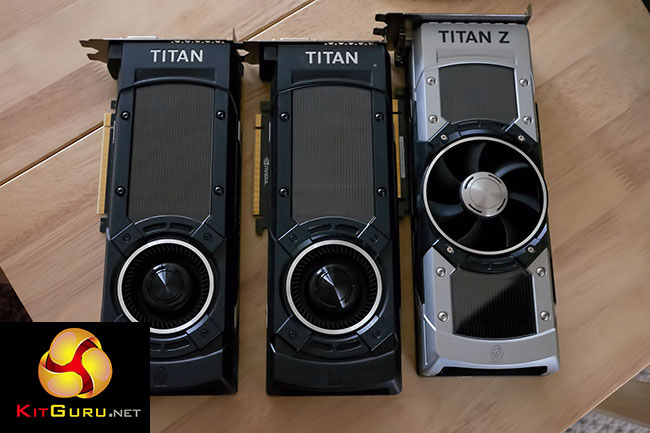
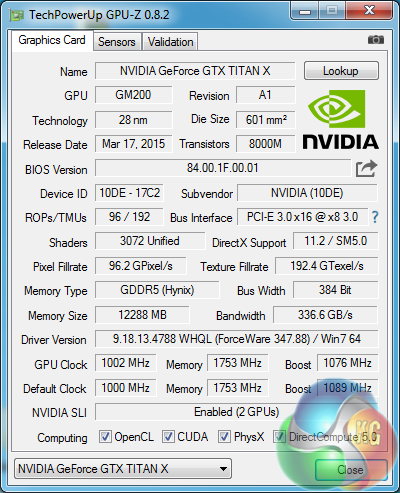
An overview of the hardware in the latest version of GPUz – as discussed on the previous page. The GM200 core runs at 1,000mhz (1,076mhz boost) and is built on the 28nm process. There are 96 ROPs, 192 Texture units and 3,072 CUDA Cores. The whopping 12GB of GDDR5 memory runs at 1753mhz (7Gbps effective) and is connected via a 384 bit memory interface.On this page we present some high resolution images of the product taken with a Nikon D810 camera with Sigma 50mm 1.4 Art Lens. These will take much longer to open due to the dimensions, especially on slower connections. If you use these pictures on another site or publication, please credit Kitguru.net as the owner/source.
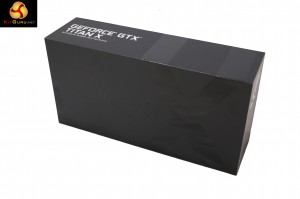
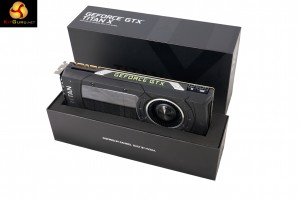
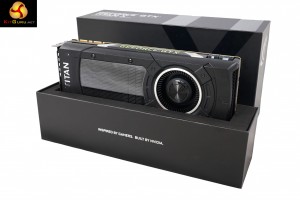
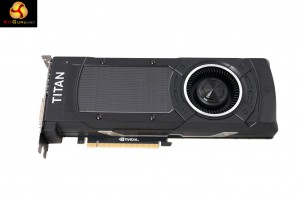
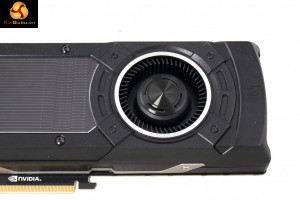
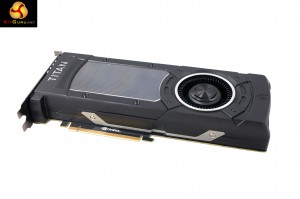
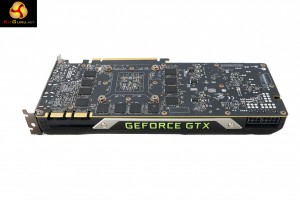
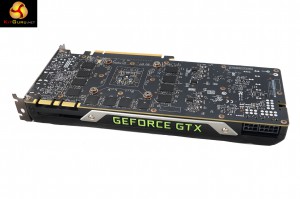
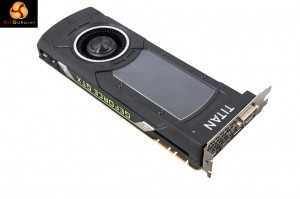
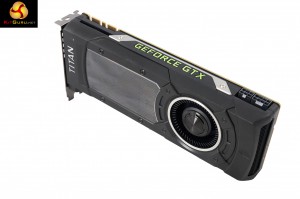
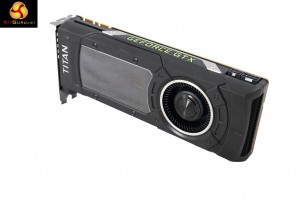
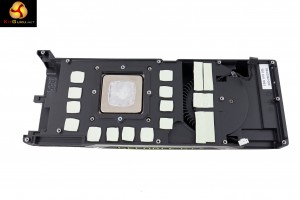
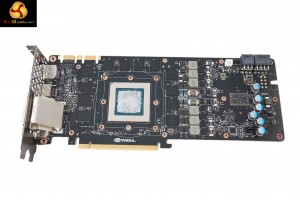
We tested all the solutions today at 1080p, 1600p and 4K resolutions. It goes without saying that if you are considering the Titan X for 1080p gaming, then you are wasting cash that would be better invested into other components. 4K is the main target area for a Titan X graphics card – although we have included 1080p and 1600p tests, as we always get asked for more resolutions.

If you want to read more about this, or are interested in buying the same Kitguru Test Rig, check out our article with links on this page. We are using an Asus PB287Q 4k and Apple 30 inch Cinema HD monitor for this review today.
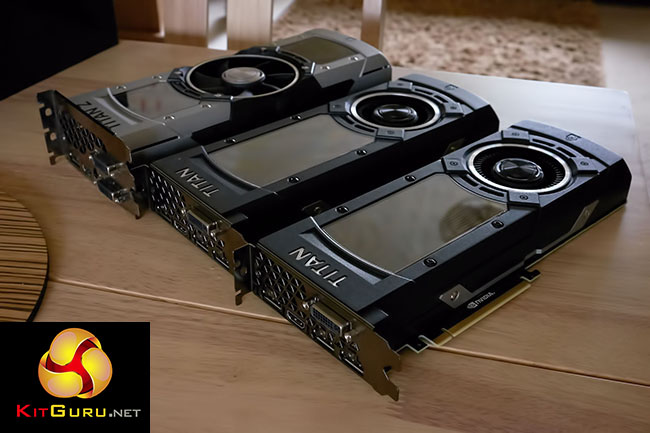
Nvidia GTX Titan X (1000mhz core / 1,753mhz Memory) – Nvidia Forceware 347.88
Comparison cards:
Nvidia GTX Titan Z (706mhz core / 1,753 mhz memory) – Nvidia Forceware 347.88
Sapphire R9 295X2 (1,018mhz core / 1,250 mhz memory) – Catalyst 15.3 beta
Asus GTX980 ROG Platinum (1,241mhz core / 1,753 mhz memory) – Nvidia Forceware 347.09
Gigabyte GTX980 G1 Gaming (1228mhz core / 1,753 mhz memory) – Nvidia Forceware 347.09
Inno3D GTX980 ‘iChill Herculez X4 Air Boss Ultra (1266 mhz core / 1753 mhz memory) – Nvidia Forceware 347.09
MSI GTX980 Gaming 4G (1216mhz core / 1753 mhz memory) – Nvidia Forceware 347.09
Asus GTX980 Strix (1178mhz core / 1753 mhz memory) – Nvidia Forceware 347.09
Asus GTX780 Ti Direct CU II OC (954mhz core / 1750 mhz memory) – Nvidia Forceware 347.09
Nvidia GTX980 Reference (1126 mhz core / 1753 mhz memory) – Nvidia Forceware 347.09
Galax GTX970 OC Silent ‘Infinity Black Edition’ (1178 mhz core / 1753mhz memory) – Nvidia Forceware 347.09
Palit GTX970 Jetstream OC (1152mhz core / 1753 mhz memory) – Nvidia Forceware 347.09
MSI GTX970 Gaming 4G (1140 mhz core / 1753 mhz memory) – Nvidia Forceware 347.09
Palit GTX780 6GB (902 mhz core / 150 2mhz memory) – Nvidia Forceware 347.09
Asus GTX970 StriX OC (1114 mhz core / 1753 mhz memory) – Nvidia Forceware 347.09
Asus R9 290 Direct CU II OC (1000 mhz core / 1260 mhz memory) – Catalyst 14.12
OCUK GTX970 ‘Nvidia 970 Cooler Edition’ (1051 mhz core / 1753 mhz memory) – Nvidia Forceware 347.09
Software:
Windows 7 Enterprise 64 bit
Unigine Heaven Benchmark
Unigine Valley Benchmark
3DMark Vantage
3DMark 11
3DMark
Fraps Professional
Steam Client
FurMark
Games:
Grid AutoSport
Tomb Raider
Metro Last Light Redux
Thief 2014
All the latest BIOS updates and drivers are used during testing. We perform generally under real world conditions, meaning KitGuru tests games across five closely matched runs and then average out the results to get an accurate median figure. If we use scripted benchmarks, they are mentioned on the relevant page.
Game descriptions edited with courtesy from Wikipedia.Futuremark released 3DMark Vantage, on April 28, 2008. It is a benchmark based upon DirectX 10, and therefore will only run under Windows Vista (Service Pack 1 is stated as a requirement) and Windows 7. This is the first edition where the feature-restricted, free of charge version could not be used any number of times. 1280×1024 resolution was used with performance settings.
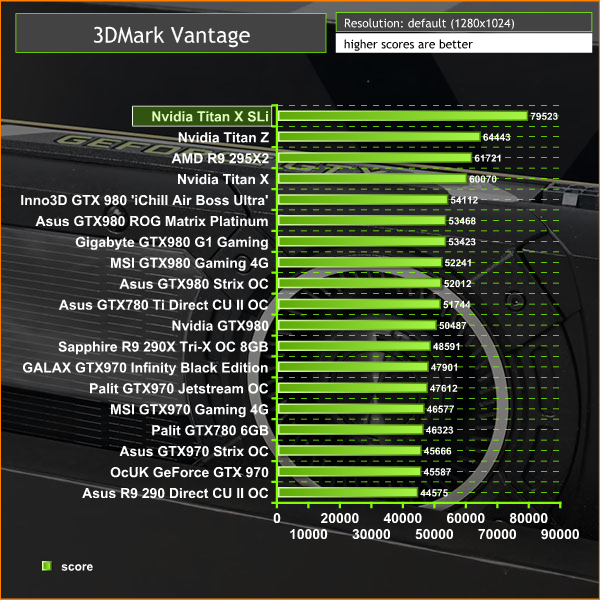
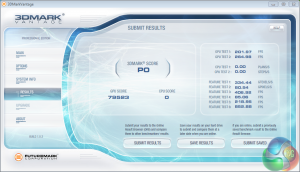
SLI scores in this older Direct X 10 benchmark are strong, scoring almost 80,000 points – around 15,000 points ahead of the Titan Z.
3DMark 11 is designed for testing DirectX 11 hardware running on Windows 7 and Windows Vista the benchmark includes six all new benchmark tests that make extensive use of all the new features in DirectX 11 including tessellation, compute shaders and multi-threading. After running the tests 3DMark gives your system a score with larger numbers indicating better performance. Trusted by gamers worldwide to give accurate and unbiased results, 3DMark 11 is the best way to test DirectX 11 under game-like loads. If you want to learn more about this benchmark, or to buy it yourself, head over to this page.
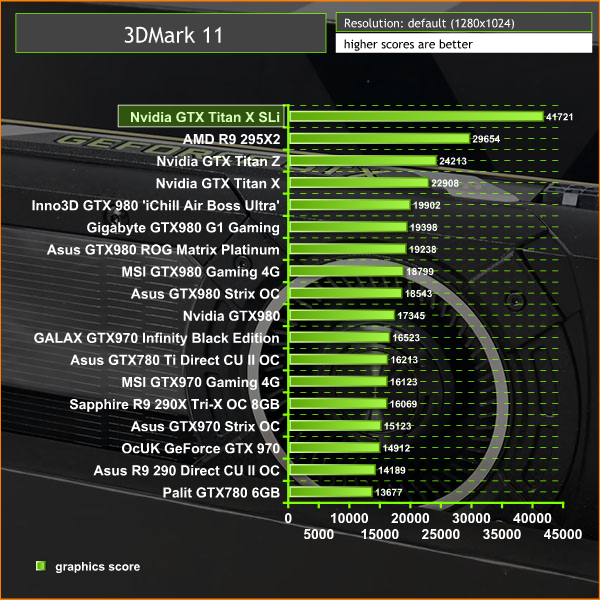
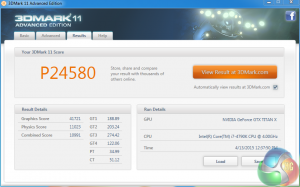
Killer performance, scoring almost 42,000 points. By comparison, the AMD R9 295X2 scores around 30,000 points.
3DMark is an essential tool used by millions of gamers, hundreds of hardware review sites and many of the world’s leading manufacturers to measure PC gaming performance.
Futuremark say “Use it to test your PC’s limits and measure the impact of overclocking and tweaking your system. Search our massive results database and see how your PC compares or just admire the graphics and wonder why all PC games don’t look this good.
To get more out of your PC, put 3DMark in your PC.”
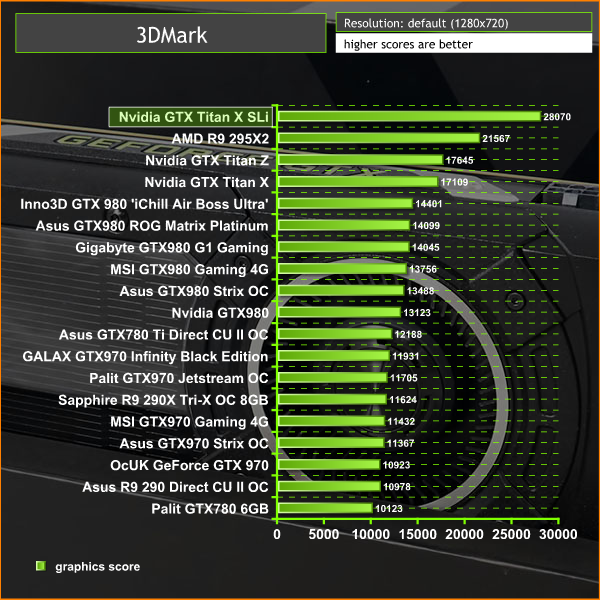
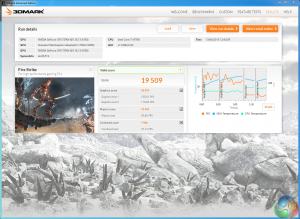
A single Nvidia Titan X can almost keep up with the dual GPU Titan Z. Two of them in SLI deliver performance well in excess of a AMD R9 295X2. The final score of 28,070 points is formidable.
Unigine provides an interesting way to test hardware. It can be easily adapted to various projects due to its elaborated software design and flexible toolset. A lot of their customers claim that they have never seen such extremely-effective code, which is so easy to understand.
Heaven Benchmark is a DirectX 11 GPU benchmark based on advanced Unigine engine from Unigine Corp. It reveals the enchanting magic of floating islands with a tiny village hidden in the cloudy skies. Interactive mode provides emerging experience of exploring the intricate world of steampunk. Efficient and well-architected framework makes Unigine highly scalable:
- Multiple API (DirectX 9 / DirectX 10 / DirectX 11 / OpenGL) render
- Cross-platform: MS Windows (XP, Vista, Windows 7) / Linux
- Full support of 32bit and 64bit systems
- Multicore CPU support
- Little / big endian support (ready for game consoles)
- Powerful C++ API
- Comprehensive performance profiling system
- Flexible XML-based data structures

We set Quality to ‘High', Tessellation to ‘Normal' and resolution to 1600p.
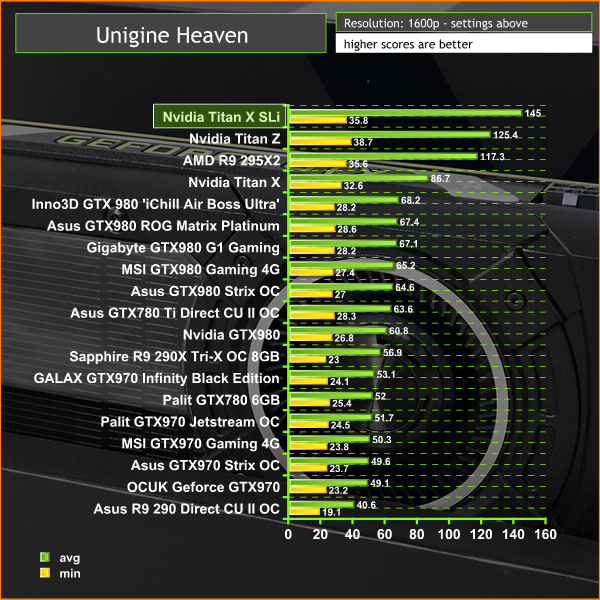
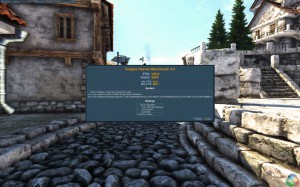
No shortage of performance fr0m the SLI configuration, increasing from an average frame rate of 87 frames per second (Single Titan X) to 145 frames per second.
Grid Autosport (styled as GRID Autosport) is a racing video game by Codemasters and is the sequel to 2008′s Race Driver: Grid and 2013′s Grid 2. The game was released for Microsoft Windows, PlayStation 3 and Xbox 360 on June 24, 2014. (Wikipedia).



On this page we test at 1080p and 1600p using the ‘Ultra' image quality profile with 8x MSAA.
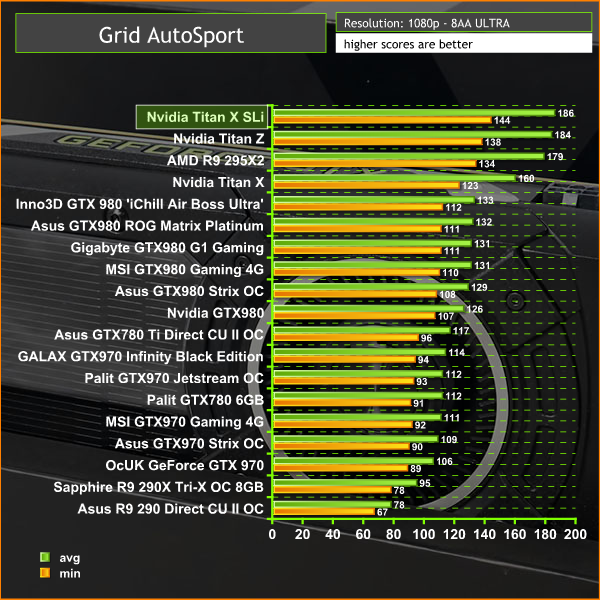
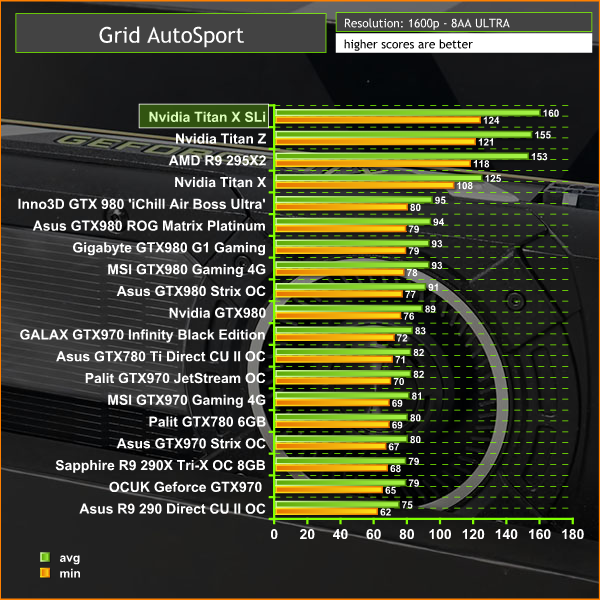
It really is overkill to buy a Titan X for 1080p gaming, Even at 1600p resolutions, the card is averaging 125 frames per second, and holding above 100 frames per second at all times. Two cards? total overkill and we can see that CPU limiting is also an issue.
Grid Autosport (styled as GRID Autosport) is a racing video game by Codemasters and is the sequel to 2008′s Race Driver: Grid and 2013′s Grid 2. The game was released for Microsoft Windows, PlayStation 3 and Xbox 360 on June 24, 2014. (Wikipedia).
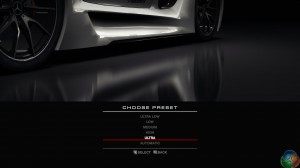
We test at Ultra HD 4k with 8MSAA. The Ultra Profile is selected for maximum image quality.
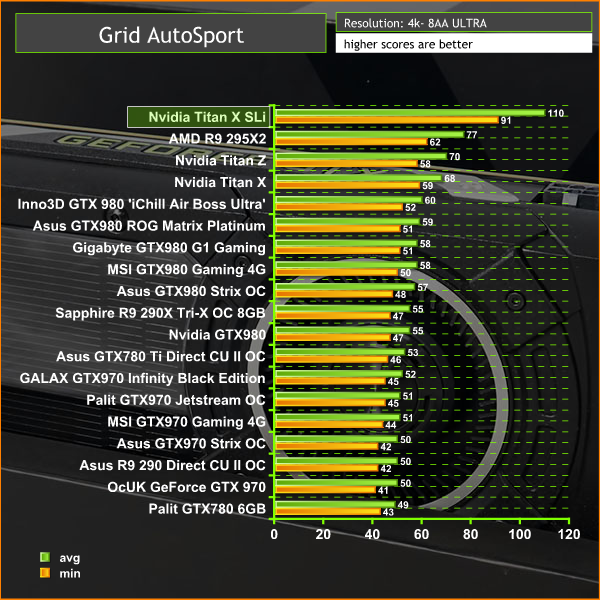
The single Titan X can almost hold a constant 60 frames per second at Ultra HD 4K resolutions – impressive in itself. When we SLI two Titan X cards, the frame rates increase substantially, and the system holds an average of 110 frames per second, with minimum rates above 90 at all times.Thief is set in a dark fantasy world inspired by Victorian, gothic, and steampunk aesthetics. Garrett, a master thief who has been away from his hometown for a long time, returns to it, a place known only as The City, and finds it ruled with an iron grip by a tyrant called The Baron. While The City is ravaged by a plague, the rich continue to live in isolation and good fortune while the poor are forming numerous mobs against the authorities, Garrett intends to use the volatile situation to his favor. (Wikipedia).
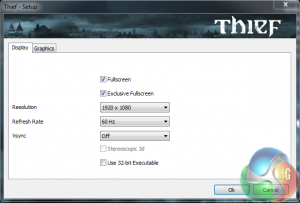
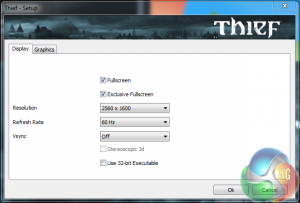
We test with the ‘very high' image quality preset at 1080p and 1600p.
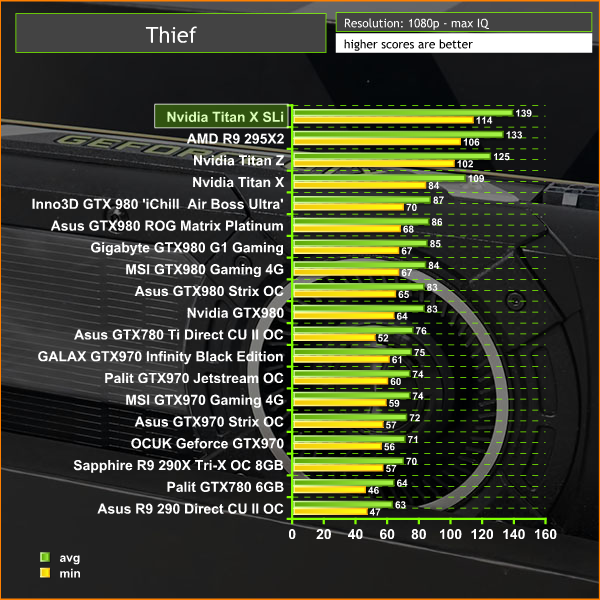
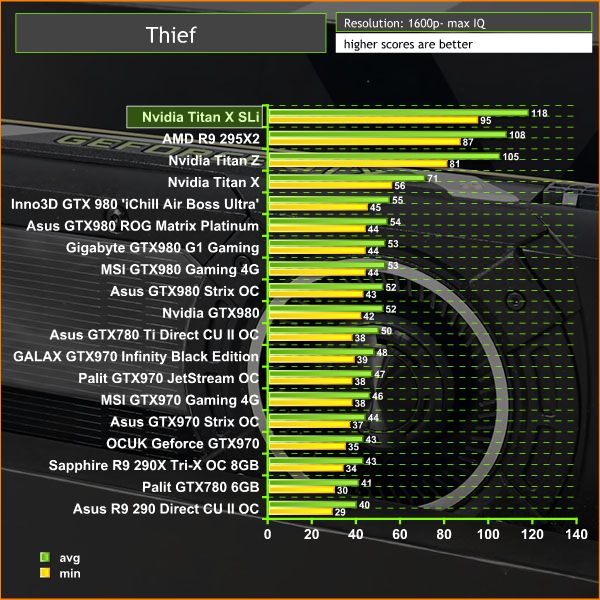
A demanding engine, even at 1600p, although even a single Titan X is up to the task,Thief is set in a dark fantasy world inspired by Victorian, gothic, and steampunk aesthetics. Garrett, a master thief who has been away from his hometown for a long time, returns to it, a place known only as The City, and finds it ruled with an iron grip by a tyrant called The Baron. While The City is ravaged by a plague, the rich continue to live in isolation and good fortune while the poor are forming numerous mobs against the authorities, Garrett intends to use the volatile situation to his favor. (Wikipedia).
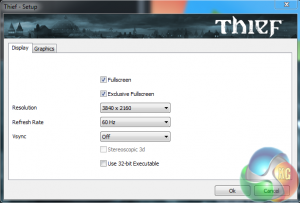
We test at the ‘very high' preset for maximum image quality. Resolution is set to 4k for this particular test.
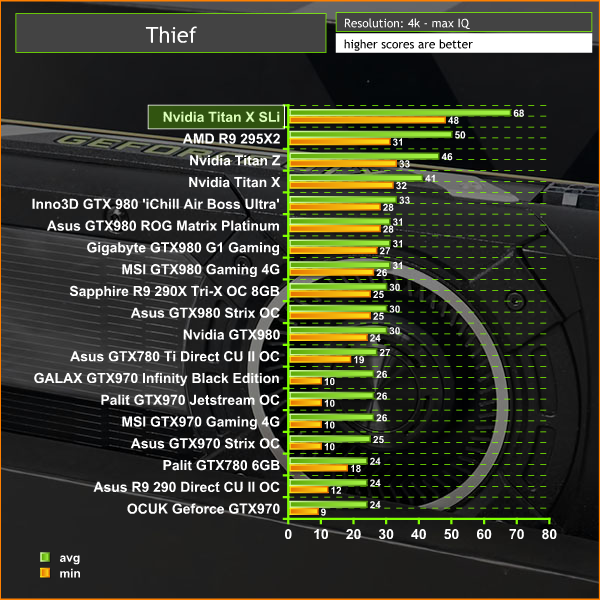
Thief is an extremely demanding game at 4K, and two of the Titan X cards in SLI hold an average of 68 frames per second. Not quite enough to hold a constant 60+, but its smooth and enjoyable to play.
Tomb Raider received much acclaim from critics, who praised the graphics, the gameplay and Camilla Luddington’s performance as Lara with many critics agreeing that the game is a solid and much needed reboot of the franchise. Much criticism went to the addition of the multiplayer which many felt was unnecessary. Tomb Raider went on to sell one million copies in forty-eight hours of its release, and has sold 3.4 million copies worldwide so far. (Wikipedia).
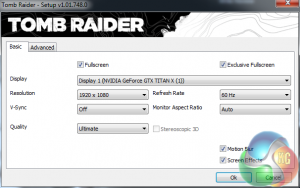
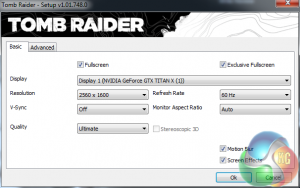
We test with the ‘ultimate' image quality profile at 1080p and 1600p.
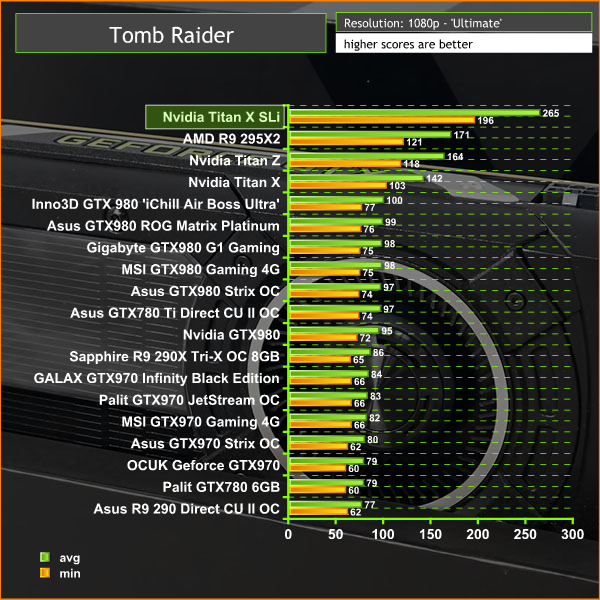
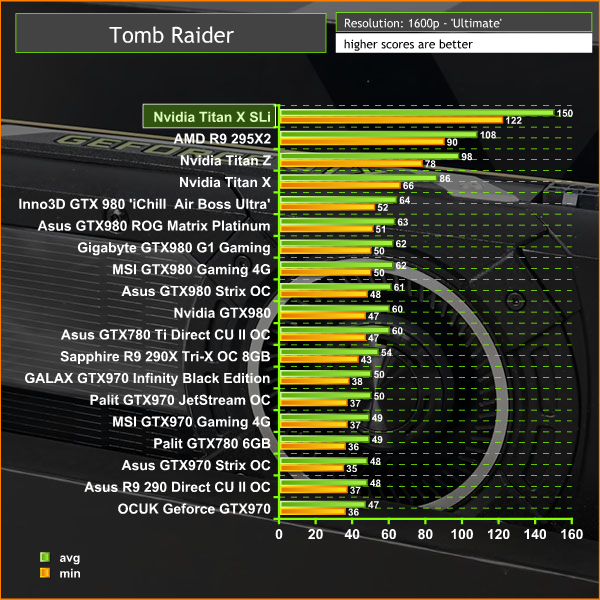
One of the best engines on the market, even today. At 1600p the Titan X is holding frame rates above 60 at all times – giving a super smooth gaming experience. With two cards in the system, the frame rates jump massively. 265 frames per second at 1080p is ludicrous.Tomb Raider received much acclaim from critics, who praised the graphics, the gameplay and Camilla Luddington’s performance as Lara with many critics agreeing that the game is a solid and much needed reboot of the franchise. Much criticism went to the addition of the multiplayer which many felt was unnecessary. Tomb Raider went on to sell one million copies in forty-eight hours of its release, and has sold 3.4 million copies worldwide so far. (Wikipedia).
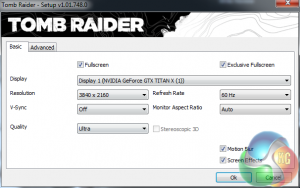
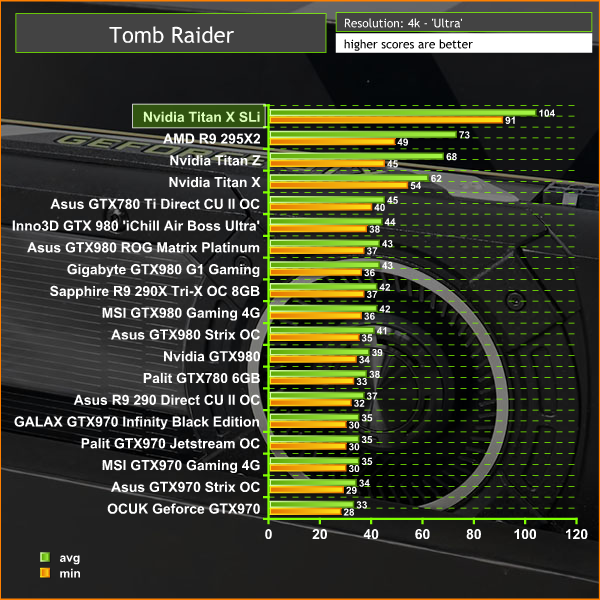
We test at Ultra HD 4k resolution with the ‘Ultra' image profile enabled. Spectacular results at this resolution, holding between 90 and 105 frames per second at all times.
On May 22, 2014, a Redux version of Metro Last Light was announced. It was released on August 26, 2014 in North America and August 29, 2014 in Europe for the PC, PlayStation 4 and Xbox One. Redux adds all the DLC and graphical improvements. A compilation package, titled Metro Redux, was released at the same time which includes Last Light and 2033. (Wikipedia). We test with following settings: Quality-Very High, SSAA-off, Texture Filtering-16x, Motion Blur-Normal, Tessellation-Normal, Advanced Physx-On.
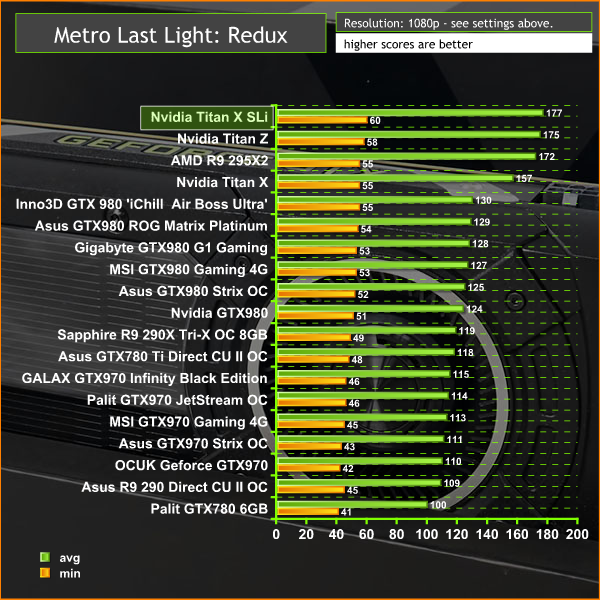
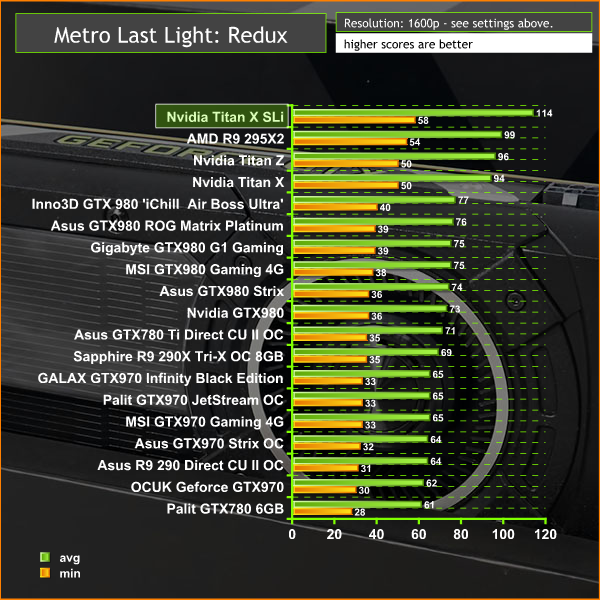
A demanding engine at 1600p. No problems for the Titan X to power – holding frame rates above 50 at all times.
On May 22, 2014, a Redux version of Metro Last Light was announced. It was released on August 26, 2014 in North America and August 29, 2014 in Europe for the PC, PlayStation 4 and Xbox One. Redux adds all the DLC and graphical improvements. A compilation package, titled Metro Redux, was released at the same time which includes Last Light and 2033. (Wikipedia). We test with following settings: Quality-High, SSAA-off, Texture Filtering-16x, Motion Blur-off, Tessellation-Normal, Advanced Physx-off.
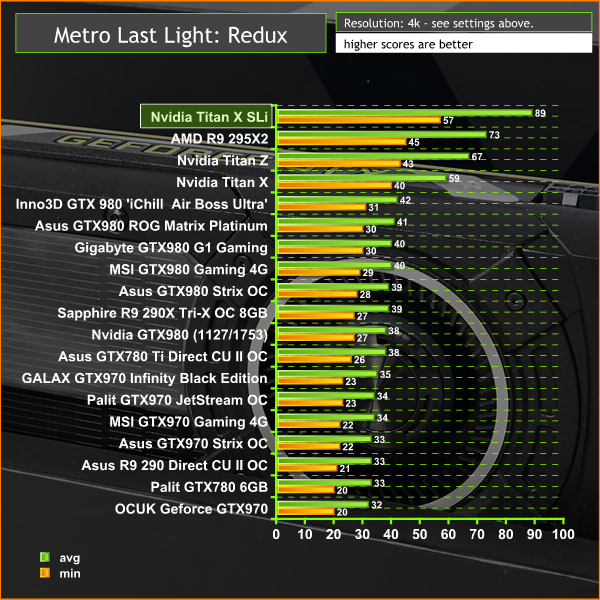
Ultra HD 4K separates the wheat from the chaff. The Titan X in SLI almost managed to hold a steady 60 fps+ at all times. Regardless the real world gaming experience at 4K was fanastic.
The tests were performed in a controlled air conditioned room with temperatures maintained at a constant 23c – a comfortable environment for the majority of people reading this.Idle temperatures were measured after sitting at the desktop for 30 minutes. Load measurements were acquired by playing Crysis Warhead for 30 minutes and measuring the peak temperature. We also have included Furmark results, recording maximum temperatures throughout a 30 minute stress test. All fan settings were left on automatic.
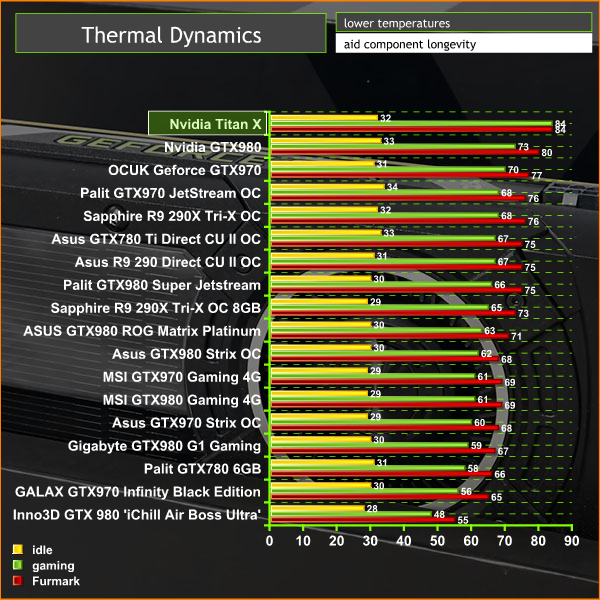
Idle temperatures are great. Under load the card hits 84c after a short while. The GPU is using Nvidia's GPU Boost 2.0 which dynamically adjusts clock speed and voltage settings, factoring in temperatures.
We left a slot between the cards to help with airflow.
We install the graphics card into our system and measure temperatures on the back of the PCB with our Fluke Visual IR Thermometer/Infrared Thermal Camera. This is a real world running environment.
Details on the test is shown below.
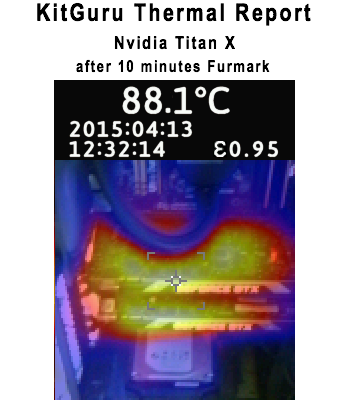
Above, a traditional heatmap analysis. Without a backplate on the PCB the card does get quite hot to the touch. A large portion of the PCB heats up to around 80c, with ‘hotspots' hitting around 90c.
We have built a system inside a Lian Li chassis with no case fans and have used a fanless cooler on our CPU. The motherboard is also passively cooled. This gives us a build with almost completely passive cooling and it means we can measure noise of just the graphics card inside the system when we run looped 3dMark tests.
We measure from a distance of around 1 meter from the closed chassis and 4 foot from the ground to mirror a real world situation. Ambient noise in the room measures close to the limits of our sound meter at 28dBa. Why do this? Well this means we can eliminate secondary noise pollution in the test room and concentrate on only the video card. It also brings us slightly closer to industry standards, such as DIN 45635.
KitGuru noise guide
10dBA – Normal Breathing/Rustling Leaves
20-25dBA – Whisper
30dBA – High Quality Computer fan
40dBA – A Bubbling Brook, or a Refrigerator
50dBA – Normal Conversation
60dBA – Laughter
70dBA – Vacuum Cleaner or Hairdryer
80dBA – City Traffic or a Garbage Disposal
90dBA – Motorcycle or Lawnmower
100dBA – MP3 player at maximum output
110dBA – Orchestra
120dBA – Front row rock concert/Jet Engine
130dBA – Threshold of Pain
140dBA – Military Jet takeoff/Gunshot (close range)
160dBA – Instant Perforation of eardrum
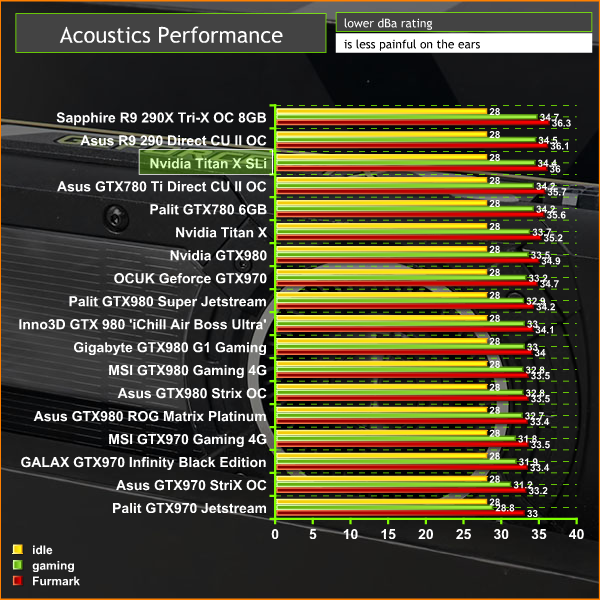
The Titan X is using a reference Nvidia cooler, which while not quite at the same level as modified solutions from Nvidia partners, handles the task reasonably well. We wouldn't say this was the quietest card we have ever tested, however fan noise is not that intrusive. That said, the fans work harder if the two cards are in directly adjacent slots.
We ran several high frame rate tests to try and aggravate coil whine – it wasn't noticeable.To test power consumption today we are using a Keithley Integra unit and we measure power consumption from the VGA card inputs, not the system wide drain. We measure results while gaming in Tomb Raider at 4k resolution and the synthetic stress test Furmark – recording both results.
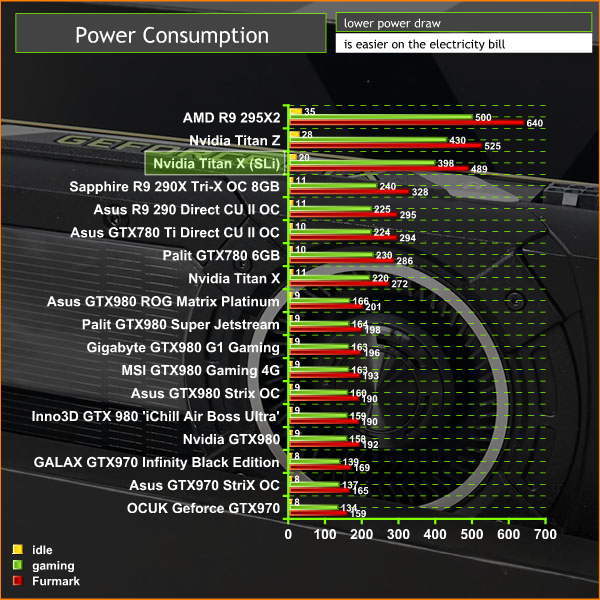
Considering the performance of the Titan X, the power demand under load when gaming, is very impressive. It demands 10 watts less under load, than the Palit GTX780 6GB we tested.
To overclock today we are using the latest version of MSI's Afterburner based on the excellent Rivatuner.
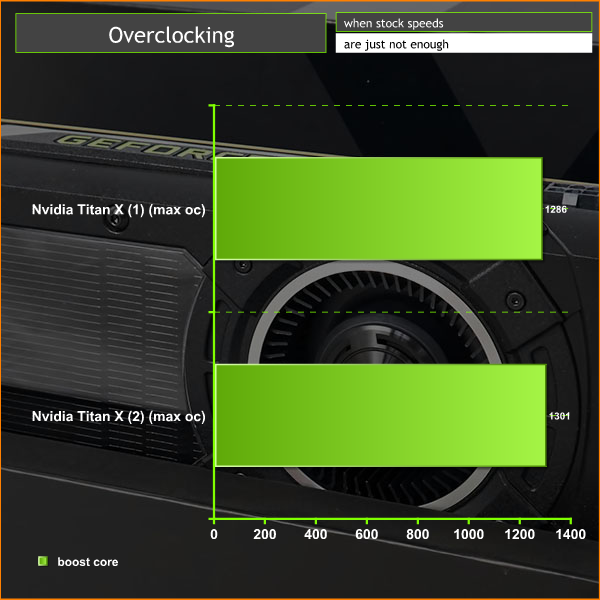
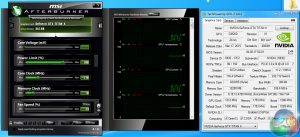
We managed to squeeze another 18% from the core before the system would hardlock or artifacting would occur. We don't tend to push the GDDR5 memory much on these cards as it has minimal impact on overall performance. One card could be overclocked a tiny bit further than the other – to a boost speed of 1,301mhz.
It is easy to increase the temperature threshold from 84c to 91c – the maximum possible. Power draw can be increased to 110%.
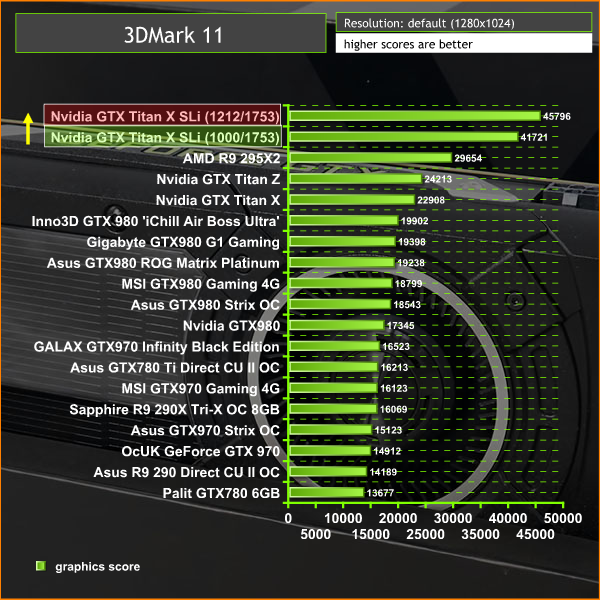
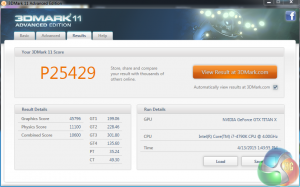
We overclocked both cards to a boost speed of 1,280mhz and the graphics score increased noticeably from 41,721 points to 45,796 points.
If you are in the market for a new 4K monitor or have just bought one then be prepared to pay serious cash to achieve those super silky smooth 60+ frame rates. Granted a single Nvidia Titan X delivers a commendable 4K experience but if you like to play with the highest possible image quality settings then it will struggle, depending on the demands of the specific game engine.
4K may be the future of PC gaming, but right now the costs are undoubtedly prohibitive. The price of the monitor itself is only a small part of the story. For those with deeper pockets however, there are options.
I use two overclocked GTX980's in my own gaming system and have had some memorable gaming sessions at 3,840 x 2,160. Unfortunately, when moving from 2 card SLI to Tri or Quad SLi, performance scaling holds far from a level we would want. Engine profile optimisations are always best with one or two Nvidia cards – the most obvious driver development focus for both Nvidia and AMD.
In reality, building a system with three or four GTX 980's isn't quite as smooth sailing as we would like. Even in 2015 games continue to scale very badly, and some not at all. Two cards is really the ideal configuration for maximum performance and driver profile compatibility.
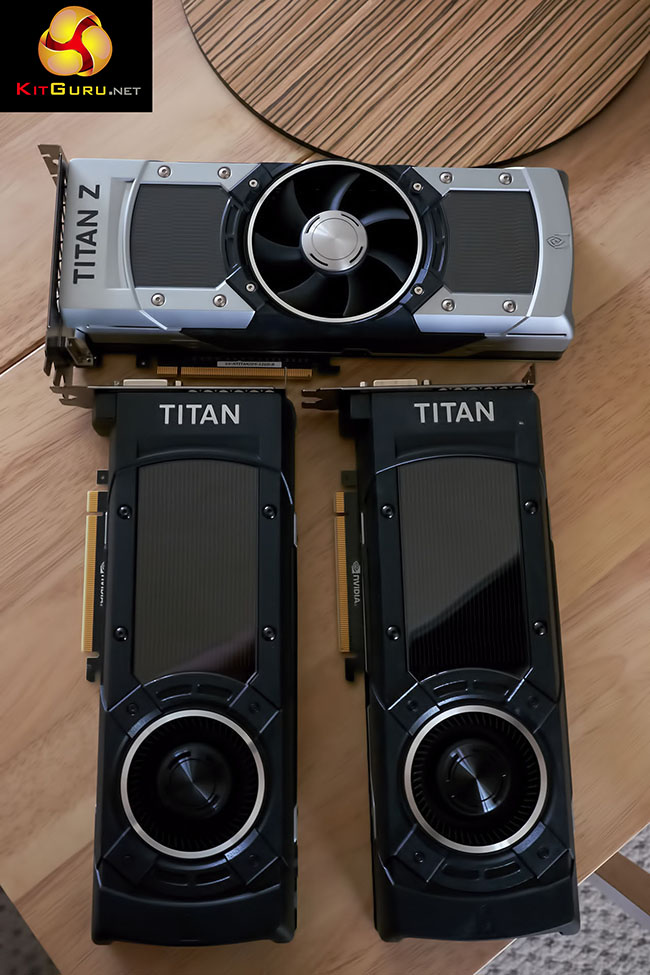
There is no doubt that the GTX Titan X is another knockout product from Nvidia, the new GM200 at the heart of the graphics card is a phenomenal design. There really is no competition for the Titan X right now – although even the GTX980 has yet to face any real competition from AMD.
The Titan X only really makes sense at 4K. It is able to power many game engines and maintain frame rates above 30 at all times. If you want solid 60+ frame rates, then adding another Titan X reaps good reward, albeit at considerable expense.
The Titan X ships with a new black reference cooler, and it performs reasonably well. At default settings, the card is likely to run at 84c when playing games, constantly. As Nvidia haven't felt the need to fit a substantial backplate, hotspots on the rear of the PCB are hitting 90c, which while not dangerous, is certainly greater than I would like to see. Our testing earlier in the review with a Visual IR Thermometer/Infrared Thermal Camera highlights these points.
What alternatives are there for 4K gaming? Nvidia have the Titan Z, which is slower and more expensive than even two Titan X graphics cards. I would say there is no market for this solution any more – if you can still find one new, they are still selling for around the £2,000 mark. The performance does not come close to justifying the cost.
The GTX980 is still a solid option for 4K – in SLi. That said, the 4GB of GDDR5 is a limiting factor for many. The Titan X is equipped with a 12GB framebuffer – a huge amount of memory, even for 4K gaming. The GM200 is likely to run out of grunt long before any game would be calling upon anything close to the limits of the hardware. As we said before however, the design and release of the Titan X does open the door for a 6GB GTX980 ti at a later date.
We all know the AMD R9 295X2 is a wonderful solution, and current price drops to £499.99 inc vat mean it is difficult to ignore. If you are buying an AMD solution for 4K gaming, this is the one to get. The liquid cooling helps reduce noise under load and keep the hot running architecture in check.

Overclockers UK have a range of Titan X cards for sale already, with many still on pre-order. You can see the options over HERE. Remember all Titan X cards are reference designs, so shop around – you will only be paying extra for a brand name from an Nvidia partner.
Discuss on our Facebook page, over HERE.
Pros:
- Nvidia architecture is leading the way
- Nvidia reference cooler looks great.
- solid SLI scaling.
- unlikely to ever run out of memory.
- Overclocks surprisingly well. (1,280mhz boost+)
Cons:
- no backplate and some hotspots on the PCB.
- Double precision is slow.
- overkill for 1080p, 1440p and 1600p.
- 12GB of memory is excessive.
- £900 x2 =£1,800. It is Visa card hell.
Kitguru says: The Nvidia Titan X is a monster GPU targeting the 4K audience with deep pockets. It is mighty expensive, but if you must have the best, there is little competition.

 KitGuru KitGuru.net – Tech News | Hardware News | Hardware Reviews | IOS | Mobile | Gaming | Graphics Cards
KitGuru KitGuru.net – Tech News | Hardware News | Hardware Reviews | IOS | Mobile | Gaming | Graphics Cards


